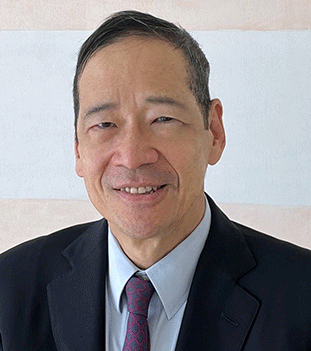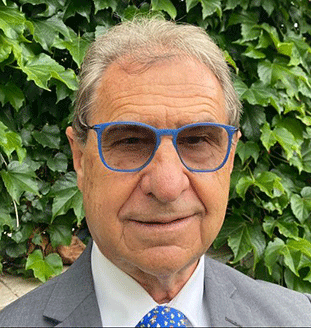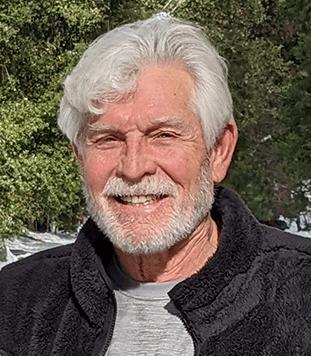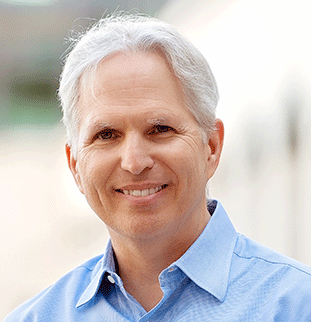2023 Gold Medal, Honorary Member, Outstanding Contributions in Neuroradiology Education, and Outstanding Contributions in Research Award Recipients
The 2023 ASNR Awards Committee, chaired by Tina Young Poussaint, MD, FACR, has selected the following as recipients of the ASNR 2023 Annual Awards.
ASNR Awards Gordon Sze, MD, FACR, with the 2023 Gold Medal

Dr. Gordon Sze is Professor of Radiology at Yale University School of Medicine and served as Chief of Neuroradiology for thirty years. He is also past-President of the American Society of Neuroradiology (2014-2015) and of the American Society of Spine Radiology (2004-2005). In addition, he has served as an Associate Editor or a member of the Editorial Advisory Board of the American Journal of Neuroradiology, Radiology, the American Journal of Roentgenology, and Investigative Radiology. He has over 150 peer reviewed publications, a high percentage of which are as primary or senior author, including in prestigious journals outside of radiology, such as JAMA and the New England Journal of Medicine. He has trained over 250 Neuroradiology fellows, many of whom have gone on to academic careers at major institutions.
Born and raised in Manhattan, Gordon was strongly influenced at an early age by his parents, both of whom were in the medical field. From Phillips Academy in Andover, Massachusetts, Gordon entered Harvard College in 1973, graduating summa cum laude and as a member of Phi Beta Kappa in 1976. In the year between his graduation from college and entering Harvard Medical School, Gordon received the Sheldon Fellowship, an award that allowed him to study rural health care delivery in the developing countries of Papua New Guinea, Nepal, and Rwanda.
After medical school, Dr. Sze did an internship in internal medicine, a residency in Diagnostic Radiology, and a fellowship in Neuroradiology at the University of California, San Francisco. In addition to the outstanding faculty, one of the strong points of the Neuroradiology fellowship at that time was the experience of being in a department with the first clinical MR imaging unit in the world.
Following training at UCSF, Dr. Sze returned to New York City, where he joined the faculty at the Memorial Sloan Kettering Cancer Center as an assistant professor at Cornell University Medical College. In 1989, after 3 years at Sloan Kettering, he was recruited to Yale University, where he was appointed Chief of the Section of Neuroradiology.
Throughout his career, Dr. Sze has been an active academician, publishing studies and presenting his work in a large range of important topics in Neuroradiology. He was the first to study and publish research on multiple technical aspects of imaging of the spine. These included organizing and evaluating multi-center studies involving the initial clinical applications of contrast agents in MR imaging of the spine, as well as the development and application of fast spin-echo techniques in the spine. Other work has involved diverse areas, from metastatic disease in the spinal cord and brain to alterations of resting state connectivity in the left hemisphere language regions in premature infants to the use of portable MR for rapid diagnosis of stroke and hemorrhage. He was the recipient of the Gold Medal from the American Society of Spine Radiology in 2021.
In his leisure time, Dr. Sze has 2 major interests, both far removed from the field of Neuroradiology, fishing and Oceanic Art, the latter as a result of the time spent in New Guinea during his Sheldon fellowship. Many people have strongly influenced his life, including his parents, of course, but also his uncle, I. M. Pei, the architect of the Louvre Pyramid in Paris, the East Wing of the National Gallery in Washington, DC, among others.
Dr. Sze maintains that some of his most rewarding experiences in his career have been in service to scientific societies in radiology, especially the ASNR. He is a Fellow of the American College of Radiology and has been a member for many years of all of the major scientific societies in Radiology, including all of the subspecialty societies in Neuroradiology. He has served on numerous committees for the RSNA, ACR, ASSR, and others. However, most importantly, he has found his time spent in service to the ASNR to be one of the major highlights of his entire professional life.
ASNR Awards Pedro Lylyk, MD, with the 2023 Honorary Member Award

Prof. Pedro Lylyk MD, is Professor with Tenure of Endovascular Surgery at the Universidad de Ciencias Sociales y Empresariales (UCES), of Vascular Medicine at the Universidad del Salvador (USAL), and Adjunct Professor of Neurosurgery and Hemodinamics at the University of Buenos Aires. He is also Director of Master Degrees in Neuroradiology and Hemodynamics Neurology, Diagnostic Imaging, and Kinesiology of the University of Buenos Aires (UBA). He serves as Director and CEO of ENERI (Equipo de Neurocirugía y Radiología Intervencionista) and Clínica La Sagrada Familia in Buenos Aires, Argentina.
Dr. Lylyk attended the faculty of Medicine of the University of Buenos Aires UBA). After graduating, he completed his residency program in Pediatric Neurosurgery with Prof. Dr. Raúl Carrea at the Ricardo Gutiérrez Children’s Hospital of Buenos Aires and a fellowship in Diagnostic Neuroradiology, Therapeutic and Endovascular Neurosurgery at the University Hospital of London of the University of Western Ontario, Canada, with Prof. Charles Drake and Allan Fox and at the University of California, Los Angeles, USA with Prof. Fernando Viñuela.
Former Director of FLENI (Fundación de Lucha contra las Enfermedades Neurológicas de la Infancia) and Clínica Adventista Belgrano in Buenos Aires, Argentina.
Prof. Pedro Lylyk’s work and achievements in the neurosurgical field have spanned several decades, and range from a momentous intracranial stent placement in 1996, to leading the first in-human study of a novel hydrocephalus treatment in 2022—with more than 10,000 brain aneurysms and arteriovenous malformations (AVMs) treated in between. Since the mid-1980s, Lylyk has dedicated his career to the development and improvement of therapeutic options in endovascular neurosurgery, as well as the training of young physicians from all over the world.
His Endovascular Lab is one of the Training Centers for SILAN (Sociedad Iberolatinoamericana de Neurorradiología Diagnóstica y Terapéutica) fellows, which has allowed the training of more than 80 professionals since 1995.
Since 1986 he is dedicated to the development and improvement of devices and therapeutic options to enhance the Endovascular Neurosurgical field and represents a worldwide reference for the medical device industry. He has led and collaborated on multiple trials; acquiring extensive practical experience in the conduct of both, observational as well as randomized controlled trials of devices and procedures.
Founder of FENERI Foundation (Fundación para el Estudio de las Neurociencias y la Radiología Intervencionista), Co-Founder of the Cerebrovascular Research and Education Foundation (CREF), Co- founder of the Intracranial Stent Meeting and Society (ICS); Member of the SwissNeuroFoundation, Founding member and Ex President of SILAN, (Sociedad Iberolatinoamericana de Neurorradiología Diagnóstica y Terapéutica), AANDIT (Asociación Argentina de Neurorradiología Diagnóstica y Terapéutica, CANI (Colegio Argentino de Neurointervencionistas) and former-Director of the Argentine Brain Stroke Council of the Argentine Society of Cardiology. Member of the Swiss/Japan International Seminar on Medical Engineering Based on Vessel Biology, member of the Advisory Committee in Interventional Neuroradiology, (CINIUS), University of Santiago de Compostela, Spain.
As an active community member, Prof. Lylyk, leads the National Stroke Prevention Campaign in line with the World Stroke Organization at the Comprehension Stroke Center of Buenos Aires.
Current President of the AAAC (Asociación Argentina de Ataque Cerebral-Argentine Stroke Ass.). Dr. Lylyk is a longstanding member of the ASNR, RSNA, WFITN, SNIS, ESNR, CIRSE, ISMRM, ASITN, AHA, WSO, serving on multiple committees for these organizations.
Master of Neurosurgery at the Ether Dome, Boston, USA, World Federation of Neurosurgery, September 2009.
Distinguished as “Outstanding Personality of Science”. Legislature of Buenos Aires, Decree No. 617/011, November 30, 2011.
Recognition as “Quality Leader”, granted by the Pontifical Catholic University of Argentina – Santa Maria de los Buenos Aires (Universidad Católica Argentina (UCA), Pontificia Universidad Católica Argentina Santa María de los Buenos Aires), within the framework of the Best National Practices in Patient Quality and Safety in Argentina, XIII Higher University Course in Management of Quality in Health Services. Buenos Aires, Argentina, August 29, 2014
Recognition as “International Fellow of the American Association of Neurological Surgeons” (IFAANS), The Harvey Cushing Society, September 1, 2015.
First Tribute to Men and Women of Health, 2015 Health Prize, University of Business and Social Sciences (UCES), December 17, 2015.
Emeritus and Honorary member of the Portuguese Society of Neuroradiology and Intervention – (SPNI), September 24th, 2016
Corresponding Member of the Chilean Society of Neurosurgery.
Distinguished as Honorary Member of the Official College of Physicians of La Coruña, Spain. First non-Spanish doctor to obtain this recognition. May 30 2018,”Honourable Guest” in the City of La Plata, Province of Buenos Aires, November 2014 and “Honourable Guest” of Province of Tucumán, November 2013.
His proudest achievement in neurosurgery and neuroradiology is the early treatment of the new born with Vein of Gallen Aneurysms that he performs throughout all these years (since 1990) with a challenging and improved technique at his center in Buenos Aires with his team.
ASNR Awards Hugh Fredric (Ric) Harnsberger, MD, with the 2023 Outstanding Contributions in Neuroradiology Education Award

Dr. Hugh Fredric (Ric) Harnsberger is a Professor of Radiology and Otolaryngology at the University of Utah School of Medicine. He is an internationally recognized expert in Head & Neck Imaging who has published over 200 articles and 11 books in this area over a 35-year academic career. In 2003 he published Pocket Radiologist: Head & Neck, Top 100 Diagnoses and Pocket Radiologist: Temporal Bone, Top 100 Diagnoses. In 2004 he produced the textbook Diagnostic Imaging: Head and Neck which is the best-selling textbook in the field of Head & Neck Radiology. In 2006 he and his author team created an imaging anatomy textbook Diagnostic and Surgical Imaging Anatomy: Brain, Head & Neck and Spine. In 2009 he published Expert Differential Diagnosis: Head & Neck and in 2010 Diagnostic Imaging: Head & Neck 2nd Ed. Other books published since then include Specialty Imaging: The Temporal Bone published in 2013 and the 2016 3rd Ed. of Diagnostic Imaging: Head & Neck. He finished book/eBook entitled Imaging for the Otolaryngologist to be published in February, 2018 which won an award in the Surgical Specialties category for the British Medical Association Medical Book Awards. As CEO and founder of his company Amirsys, he created STATdx, a radiologic decision support tool.
A graduate of UCLA Medical School, Dr. Harnsberger did his radiology residency at the University of Utah School of Medicine, Salt Lake City, Utah. Fellowships in Body Imaging, Head & Neck Imaging and Neuroradiology followed. His major area of research was centered on the use of high-resolution MR imaging of diseases of the temporal bone. In 1994 he wrote his 1st book, the Head and Neck Imaging Handbook which became the preferred quick reference guide to head & neck imaging. Between 1998 & 2001, he led a medical informatics research team with a focus on radiologic decision support at the point of care. In 2000 Dr. Harnsberger received the RSNA Roentgen Centennial Fellow Award for his proposal entitled: “A Practical Radiologic Digital Teaching File Data Model”. In 2007 he served as President of the American Society of Head & Neck Radiology. In 2013 he received the Distinguished Innovator & Impact Award from the University of Utah. He was awarded the Gold Medal from the ASHNR in 2015.
Ric met the love of his life in his medical school class. With his physician wife Janet, he traveled to settle in Utah where they together raised a family of 3 sons. His first grandson Roen and granddaughter Charlotte are the apple of his eye. He and his wife are active volunteers with Habitat for Humanity and Red Cross. As cofounder of the Horizonte Scholarship Fund he is actively engaged in providing at risk youth starter scholarships to attend college. He enjoys mountain and road biking, fly fishing, and grow walls of blackberries in his back yard. If you ask, he will send you his “famous” homemade black-raspberry jam.
Dr. Harnsberger currently is a Professor Emeritus of Radiology & Otolaryngology in the University of Utah, Department of Radiology.
ASNR Awards Gregory G. Zaharchuk, MD, PhD, with the 2023 Outstanding Contributions in Research Award

Dr. Zaharchuk is Professor with Tenure of Radiology at Stanford University and the Stanford School of Medicine. He serves as Director of the Center for Advanced Functional Neuroimaging (CAFN) at Stanford, where he oversees high school students, undergraduates, graduate students, residents, fellows, and post-doctoral students whose research focuses on advanced medical imaging techniques and algorithms (including AI) with the goal of alleviating the burden of neurological disease, particularly for stroke and dementia.
He attended Stanford University for his undergraduate education, where he completed a BS in Materials Science and Engineering and a BA in German Studies. He received an MD from Harvard Medical School and a PhD in Applied Physics from the Harvard-MIT Health Sciences and Technology (HST) program. He then did his radiology residency and neuroradiology fellowship training at UCSF.
Dr. Zaharchuk is an internationally recognized expert in functional MR imaging of the brain, focusing on the ability to sensitize MRI to many different physiological parameters, including cerebral blood flow and oxygenation. He was the senior author on the 2015 Arterial Spin Labeling White Paper consensus statement which has served to harmonize ASL protocols for clinical use worldwide. He has also published seminal work in AJNR in 2012 demonstrating the added value of ASL for identifying arteriovenous shunt lesions in brain.
He has also been instrumental in the development of simultaneous PET/MRI, providing supporting data for the approval of one of the first clinical whole-body PET/MRI scanners as well as demonstrating the value of the method for neurological imaging in the setting of chronic ischemia, dementia, and brain tumors. He has been a Principal Investigator on multiple industry and NIH grants, including quantifying collateral blood flow in stroke, deep learning for image synthesis of gold standard PET CBF and cerebrovascular reactivity from MRI, low-dose PET imaging of dementia, and predicting outcomes in acute stroke.
Since learning about AI during sabbatical in 2015, he has shifted much of the focus of his laboratory and research to this emerging area, which he believes will fundamentally transform our field. He has developed and co-led the ASFNR-ASNR AI Workshop, which is in its 5th year, having provided over 80 clinicians and scientists with a hands-on practical approach to getting started on neuroradiology AI projects. In 2018, he co-founded Subtle Medical, a company devoted to using deep learning and other AI methods to improve radiological image quality, safety, and sustainability.
He is a member of the editorial board of Radiology, Journal of Magnetic Resonance Imaging, and the American Journal of Neuroradiology. He is the immediate past-president of the American Society of Functional Neuroradiology (ASFNR) and chaired both 2018 Machine Learning workshops sponsored by the International Society of Magnetic Resonance in Medicine (ISMRM), where he serves on the Board of Directors. He was recently elected as a Fellow of the American Institute for Medical and Biological Engineering (AIMBE).


